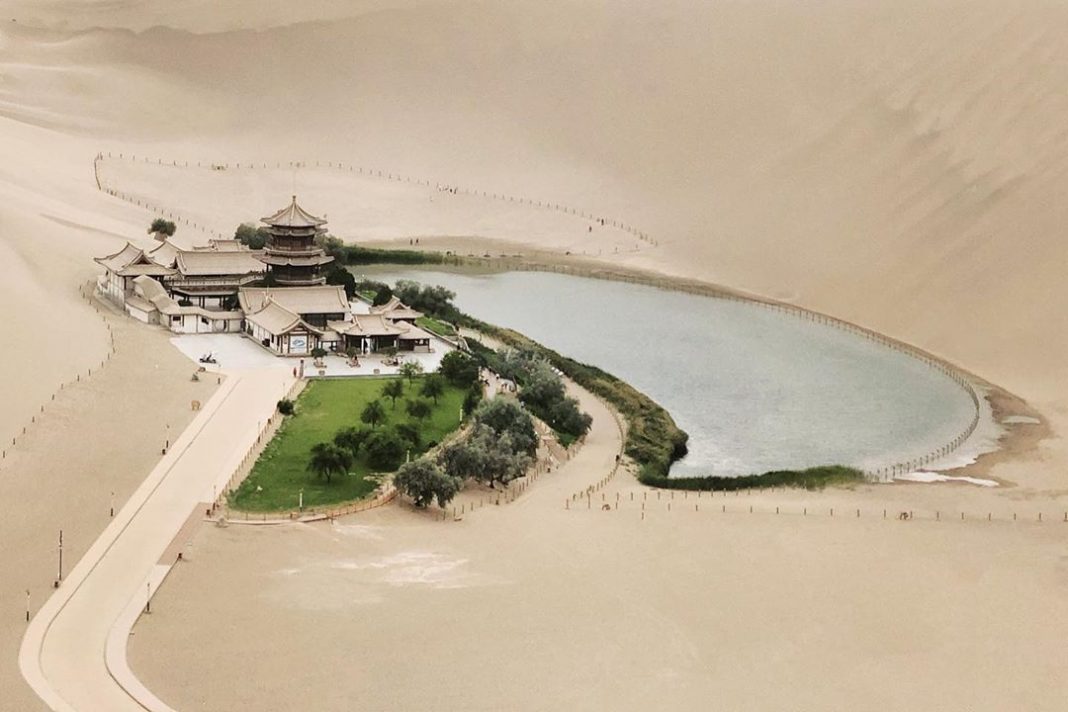The land of Buddhas and Fortresses, Dunhuang City, is one of the emerging travel destinations in China, thanks to social media. Giant statues, pagodas and oasis in the desert are emblematic of Dunhuang, once a vital trading hub along the legendary Silk Road, today it has become a popular tourist destination in western China.
As China lifts lockdown in Hubei, the locals are heading to this medieval town for a city break.
For the movie buffs and fans of wuxia dramas such as New Dragon Gate Inn (新龙门客栈), Investiture of the Gods (封神演义), this is the ancient city endowed with dramatic landscapes that have captivated filmmakers to bring the tales and legends to screen.
An Oasis in the Desert
The formation of the natural lake looks exactly like a crescent moon, the name of which is Crescent Lake. Legend has it that Taoist philosophers have built a palace with a crescent-shaped lake, however, a sandstorm buried the palace completely. What remains today is the unusual lake and a flurry of tourist activities around this area.
Singing Sand Dunes
Glimpses of Medieval China
In a place surrounded by sand and valleys, unlike China’s metropolises, Dunhuang thrives on tourism for its historical and cultural value. Dunhuang was a melting pot of cultures along the Silk Road, where it linked China, Central Asia and Europe for centuries. Case in point, Marco Polo, the Venetian explorer made his way to Dunhuang in 1271 and he remained there for about a year as he was fascinated with the myriad of Buddhist grottoes.
For centuries, the Mogao Caves fell into ruin as the entrance was buried by sand. The 1,600 years old Mogao Caves also known as the Qianfodong (the Caves of the Thousand Buddhas), are made up of 492 caves that were dug into the cliffs just south of the city. Nowadays, it is one of the top sights in Dunhuang as well as a highly regarded archaeological site.
A once daunting journey to reach Dunhuang is now a convenient flight from Beijing, Shanghai or Xi’an and well worth a visit. This part of China is off the beaten track and still retains its unique cultural identity.




